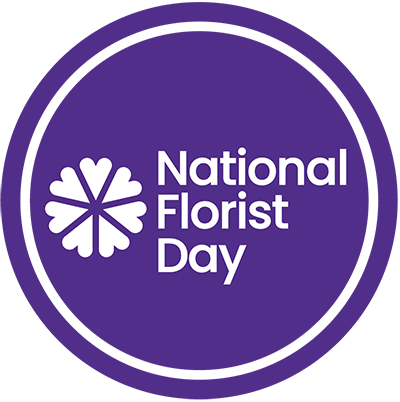
Gilding the Lily ... without a drop of pollen!
It’s three months since Caroline Marshall-Foster went to the Dutch Lily Days event. That may seem an age to prepare a report but compared to the time it takes to produce a lily it is but a blink of the eye!
Because, as she discovered, whilst the gestation period of an elephant is long (on average 22 months) and the deep-sea octopus is a whopping 4 and a half years (and she dies afterwards!), giving birth to a new Lily is massive. Indeed, can take at least 10 years to get a new variety to the commercial cropping stage assuming no issues!
And in many ways producing a new Lily is like having a baby. Talk to the breeders about their process and they are like proud parents who have nurtured something to fruition and are heartbroken when it goes wrong. Caroline takes up the story.

For every Lily that makes it, there are thousands that never see the light of day. Too leggy, too short, too small, too prone to mutations (although some of the mutations are truly gorgeous) too dark, too light, too thin, too few petals, too thick, too pollen-y and just too smelly!
Yup a lily can be just too fragrant these days – a fact borne out by research that showed consumers don’t really like the fragrance – especially the overpowering ones.
And pollen is a big no-no too. Japan and USA buyers are very anti but across the world there is an increasing resistance to it, not just because of the health risk to cats - it is fatal for them if ingested - but messy when it drops which makes them a less than desirable product to include in bouquets and a nightmare for weddings.
Add in the funerial connotations, the fact that consumers perceive the traditional Asiatic varieties as a bit cheap and that, by their own admission, growers can’t stand still there is constant development going on to create a whole new generation of Lilies.
So, given pollen equals scent never mind the health and mess arguments it’s not much wonder than the Holy Grail in the Lily world is pollen free varieties or, even more challenging, varieties that have anther, but which don’t produce pollen!

Which is why there was so much excitement at the open ceremony held at Royal van Zanten when they announced the launch of the brand-new Liber Lilies. They look like a normal lily, but the anther stays rigid ... there is literally no pollen. And if you don’t believe it, you can see a video of me bashing the anther to death over on our Facebook page to prove it’s true!
But whilst it may take a long time to get a new Lily to market it’s even more impressive when you consider how young the Lily business is.
Because, at the same time hits like Bohemian Rhapsody, Stairway to Heaven, Dancing Queen and American Pie were topping the charts, the first Lilies were being commercially grown in Holland. Dutch growers had seen production in Japan, saw the potential with many switching from crops like Chrysanthemum and Alstroemeria to focus on Lilies.
Just 50 years later Dutch lily production is now the largest in the world with more than 1200 hectares of production, producing more than 350 million stems for distribution around the world. As a side note Californian growers who had moved into Cannabis are now moving over to Lily because it will make them more money!
Whacky Baccy aside, considering the Tulip market started nearly five hundred years ago that growth is mighty impressive. In fact, so successful have Dutch growers been that where once Japan were the supplier of bulbs, they are now the biggest buyer of lilies as cut flowers.
However Lilies are a truly international product. Mother plants are developed in Holland, tissue culture to create bulbs happens in Chile and India, bulb production is done in China, Mexico, and Vietnam, selling of bulbs comes back to Holland via traders who then sell to growers and they get into the retail supply chain.
And whilst Asiatics may have been the original lily you will never see a new one. These days they are purely the building blocks, used only for breeding purposes to produce the new generations of flowers including the gorgeous Rose Lily varieties llike the one below.

Which neatly brings us back to the latest developments. Because whilst Rose Lilies now account for some 20% of Lily production and with several new varieties under development on target to grow dramatically, the latest and potentially most exciting development is the no drop pollen Oriental range created by De Jong Lelies, in collaboration with Royal van Zanten.
Produced under the brand name Liber – it means free - these oriental looking lilies - see a close up in the picture below - may have anther, but it doesn’t turn into pollen meaning you get all of the elegance and beauty without mess or fragrance. And with a better vase life as well they are perfect for cats, mixed bouquets, and weddings.
Launched at the Lily Days Grand Opening by Jan de Boer, who used to own leading wholesaler Barendsen, he enthusiastically promoted the new development saying, “the Lily are the powerhouse of the flower industry and I urge collaboration amongst florists to work with wedding planners to promote the new range.”
A view echoed by master florist Paul Wijkmeijer who said, “these pollen free varieties open up huge design possibilities and will transform event florists lives by negating the need for labour intensive pollen removal.”

So, what is next on the cards for the Lily industry. Well, a lot depends on whether you are a man or a woman! You see it’s fair to say that the world of lilies is dominated by men. Don’t get me wrong, they are fab people, and their passion and determination are clear. However, given most buyers are women – be it packers, supermarkets, or florists – there is a bit of a disconnect, especially when it comes to colour and size.
For example, I saw the most beautiful micro lily at De Jong. Called Orange Cocotte, it is tiny and would work beautifully in wedding work. Trouble is production levels are equally tiny and it is hardly promoted.
Then there is Tonic that is supposed to be white but has developed into a dreamy creamy colour. Male consensus is it should go ... female feeling is that it is fabulous and should stay.

Then there are the ones that were never meant to be. Like the stunning Magnefique I saw at Royal van Zanten ... a beautiful pink oriental that was a mistake and should never have happened. 14 years later it is a top seller!

All agree though that doubles will be the next big thing and that we’ll even get to triple and quadruples as well – again you can see videos of some of the trial varieties on our Facebook page. However, an orange double will be impossible ... yellows are not a hot prospect either – if we’re lucky we’ll see a soft lemon at best.
That said I reckon my favourite was the fabulous Black Ship, not pollen free yet but decadently dark ... and at the opposite end of the spectrum Liber Dance, a pure white pollen free Oriental coming online next year.
Another thing everyone agrees on is that collaboration and sharing will be the route to survival and hence the enthusiasm for joining forces under the iBulb brand, the people behind the Lily Days and who also run the generic promotion campaign which not only provides a shedload of information but a whole host of copyright free photographs that everyone can use to promote Lilies to the full.

As one of the newest members Bonne Boots explained. “We’re a smaller company than some but we joined because working together is better. It opens links and connects you with people you can learn from whilst promoting Lily as a cut flower is good for the whole Dutch industry.”

A view shared by the team at Kapiteyn who specialise in Calla. Cousins – their father’s founded the company – Sjim and Vivianne Kapiteijn are one of the driving forces behind the Simply Calla campaign which was slated to be disbanded by Royal Flora Holland but taken over by the growers to make sure their product was in the limelight too – yet another example of co-operation aimed at benefiting everyone by driving consumer interest.

And that’s why – as I headed for the airport after three days, eight breeders, exporters and growers, 300+ photos, a shedload of videos and a notebook full of info and quotes - even I was gobsmacked at just how much went in to make the magic happen.
Indeed, enthralled at how much passion went in to creating just one of the varieties we work with every day, and which proved this wonderful world of flowers is really rather awesome and a story that should be shared with consumers so they appreciate just what goes on behind the scenes.

Who I saw ... where I went! Thanks to everyone who made my trip so fascinating!






